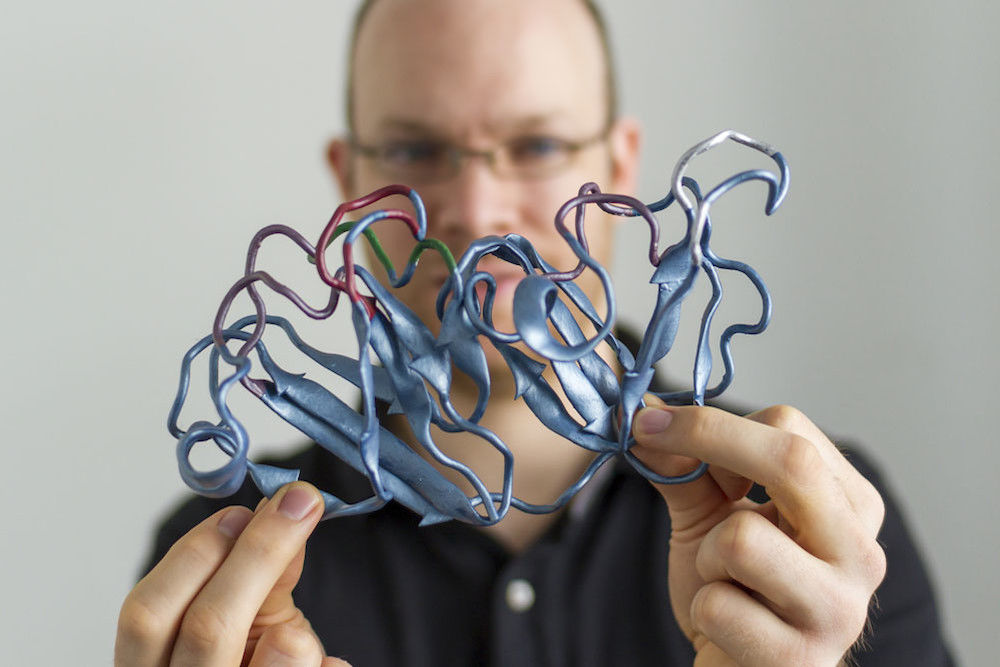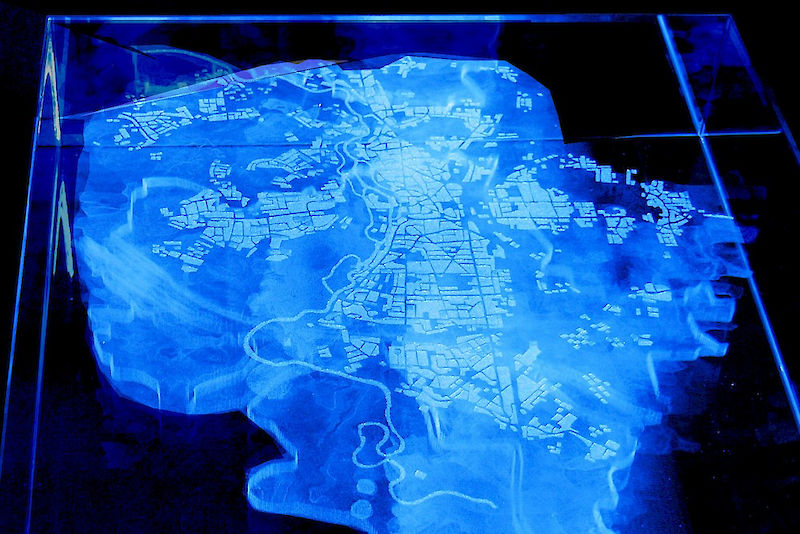3D printing: making things tangible and understandable

Graduate engineer Dominik Schneider is a research assistant at the Institute of Biochemistry and Biotechnology at MLU. He enlarged protein S from Myxococcus xanthus, which he is studying as part of his postdoc, to 200 million times its original size and had it printed. “I wanted to hold it in my hand,” is the protein researcher’s simple explanation.
3D simulations are now a normal part of his daily work. “There are structural models for a multitude of proteins that are stored in public databases. The graphic representation of these models greatly advances our understanding of the complex structures and the three-dimensional arrangements of proteins,” explains the 32 year old. “Modelling (“prototyping”) adds another quality: “The almost totally abstract world of numbers, formulas and charts is made tangible through modelling.”
Prof. Dr. Peter Wycisk, head of the field hydro and environmental geology at the Institute of Geosciences and Geography at MLU, has been grappling with 3D modelling for many years and agrees: “The objectification enables us to expand our thinking. It makes complex things visible from things that aren’t easily visible, thus also making them more accessible.”
Making complex issues tangible, understandable and accessible seems to be the main reason why scientists today are turning to printing such 3D models. “A three-dimensional model with the right proportions is great, but for research it is not essential,” says Schneider. However printing does make creating detailed models easier and theoretically allows anyone to produce something that is representable. “It also plays an educational role in science. I can use the model to show and explain to my grandmother what I’m doing. In this respect, technology can make science accessible to a larger audience.”

